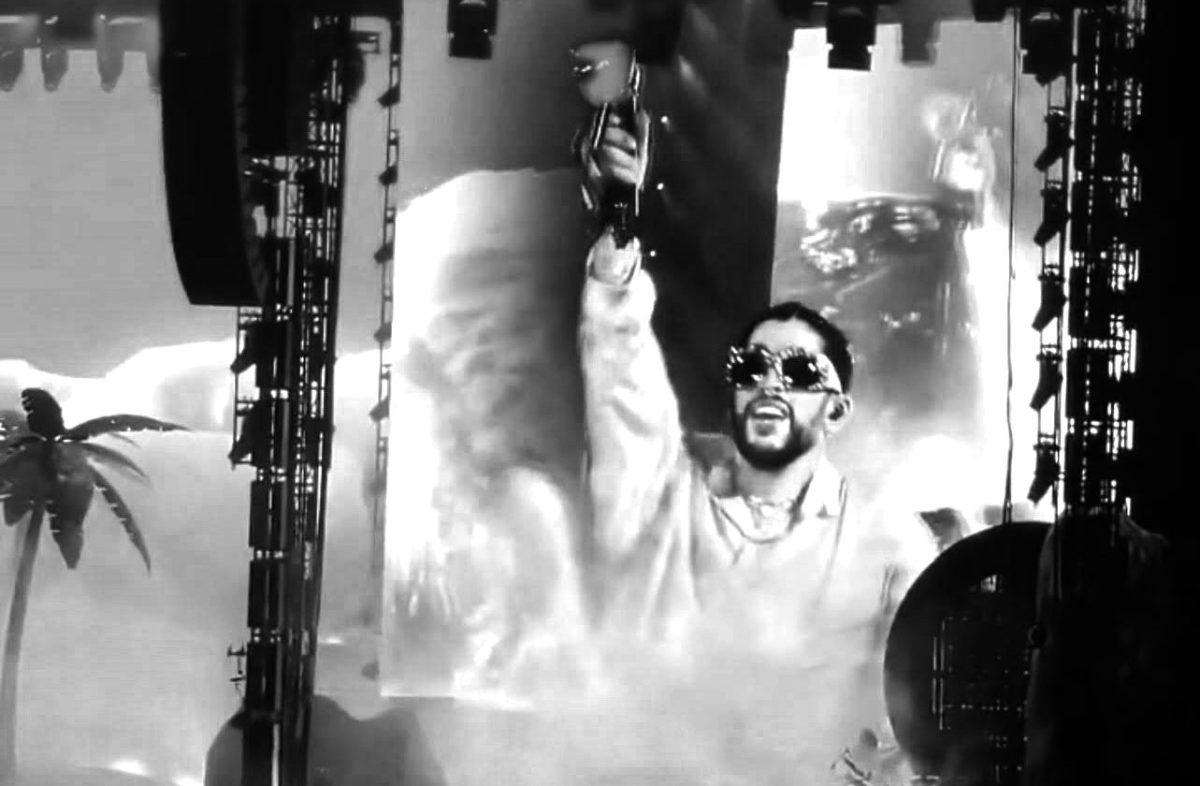The title of Bad Bunny’s latest studio album “Nadie Sabe Lo Que Va a Pasar Mañana” could not have been a more accurate description of how I felt walking into his Boston concert Wednesday night. Even though my classmates and I have been analyzing Bad Bunny’s work since the beginning of the semester, I had no idea what to expect from the world’s most popular Latin artist. I can safely say, however, that what I encountered at the concert finally helped me understand why everyone should study the cultural significance of an artist like Bad Bunny and learn about the impact he has had on Latinos, especially Puerto Ricans, around the world.
As soon as I entered the concert venue, I could feel the stadium pulsating with energy as excited fans eagerly waited in anticipation for the show to begin. Everyone seemed to have a solid understanding of the night’s dress code, with many fans wearing outfits fit for a rodeo accompanied by boots and colorful, light-up cowboy hats while others proudly displayed images of the Puerto Rican flag on their clothing. In typical Bad Bunny fashion, some fans even sported the iconic “Nadie sabe” ski mask in the hopes of sticking to the album’s Western theme. Bad Bunny’s artistic influence, unsurprisingly, was not only reflected in concert goers’ outfits but in the carefully curated playlist playing before the concert began.
Only avid salsa fans or those aware of Bad Bunny’s biggest musical influences could hear the likes of Hector Lavoe and Ismael Rivera’s 1969 hit “La Controversia” playing in the background. These subtle yet obvious references to the islands’s rich musical history in songs like “El Apagón” demonstrate Bad Bunny’s deep admiration and respect for Puerto Rico’s most famous salseros. Moreover, these songs reflect his commitment to honoring reggaetón’s Afro-Caribbean origins as well as illustrate his desire to experiment with different types of music to redefine the genre itself.
Once Bad Bunny finally took to the stage to perform, I felt overwhelmed with emotion at the sight of our class’s dream turning into a reality. As Professor Rivera-Rideau expressed in her recent interview with the Boston Globe, we had been working hard all semester studying Bad Bunny and drawing parallels between his music and some of the larger problems characterizing everyday life on the island. This concert, in many ways, was a culmination of everything we had learned about him as an artist and Puerto Rican history and culture thus far. To my classmates and I, studying Bad Bunny inside a classroom environment was one thing, but seeing him perform live in concert took our knowledge to an entirely different level.
Immediately at the outset, I saw the presence of gender performativity at work throughout Bad Bunny’s performance. After he finished performing the first 3 to 4 songs off the “Nadie sabe” soundtrack, Bad Bunny captured the audience’s attention wearing the infamous royal blue Western outfit pictured on his album cover. Blue fringes lined the sleeves of his shirt and to complete the look, he wore a complementary royal blue head scarf embellished with small rhinestones and sequins on top of his head. In this moment, I realized that even though Western attire was typically associated with masculinity, Bad Bunny’s outfit was once again using his artistic creativity to challenge the presence of hegemonic masculinity in reggaetón music.
As I watched Bad Bunny perform in this outfit on the big screen, I was amazed by the fact that he could wear gender-nonconforming clothing like the blue Western outfit while simultaneously adhere to common tropes found in the reggaetón genre, like the sexually driven macho or the violent man (Rivera Figueroa). Nevertheless, seeing Bad Bunny perform gender live reinforced the impact he has on gender politics in Puerto Rico and why he serves as a form of resistance against the presence of violence, transphobia and sexism on the island.
Similarly, Bad Bunny’s performance not only challenged the concept of gender but did an amazing job highlighting LGBTQ representation amongst his backup dancers. At one point in the concert, I was able to see two male backup dancers located on the same side of the stage. While this may have gone unnoticed by the majority of concertgoers, I knew from our class discussions that Bad Bunny is seen as a queer icon by many fans and artists, like Ricky Martin, because he actively refuses to put labels on his sexuality and gender identity. Seeing Bad Bunny commit to fostering inclusivity within the LGBTQ community made me adopt a new level of respect for him as an artist.
By the end of the concert, I had an amazing experience watching my learning unfold before me outside of the classroom and am grateful that I had the opportunity to share this experience with my class.







